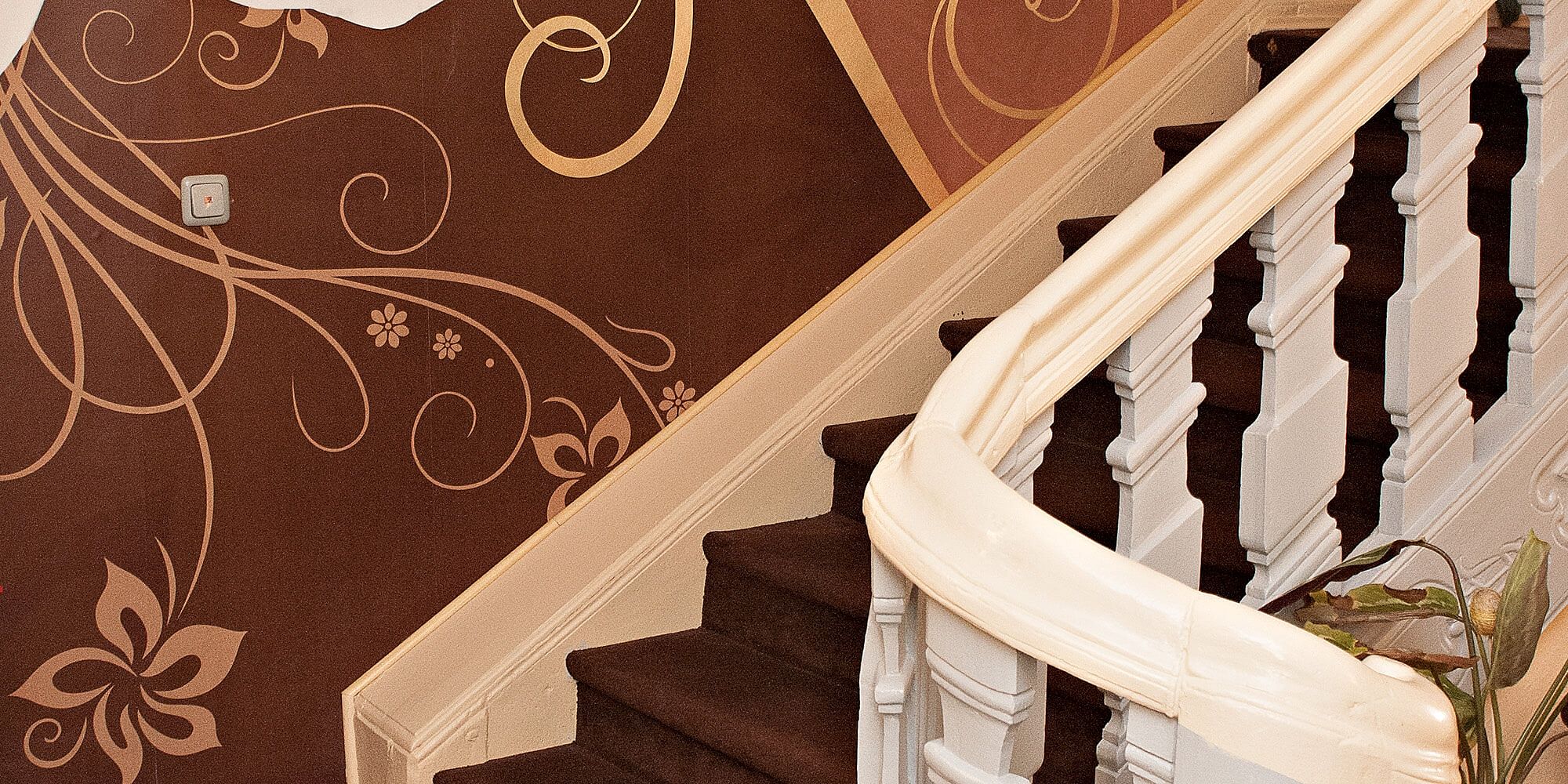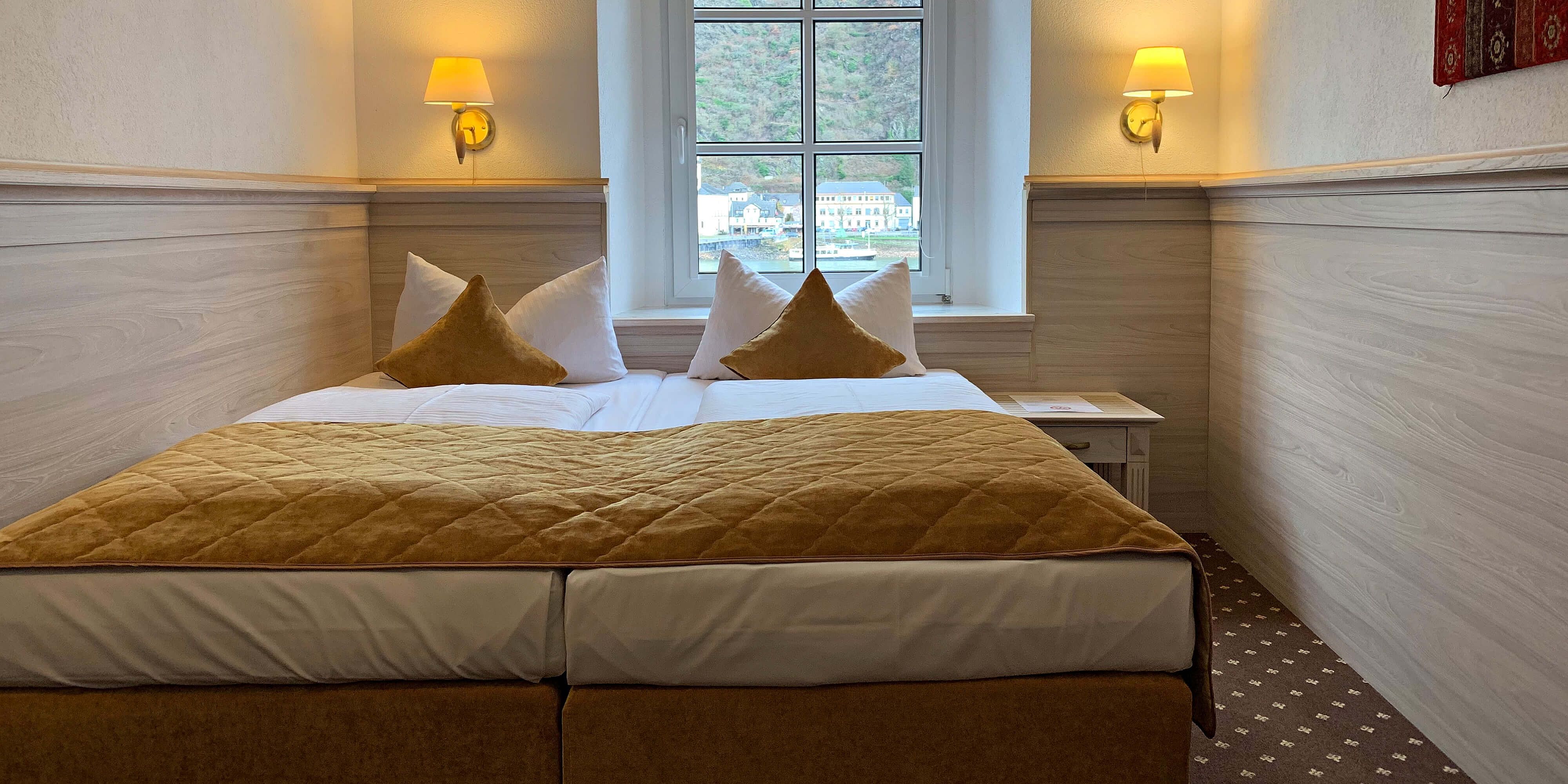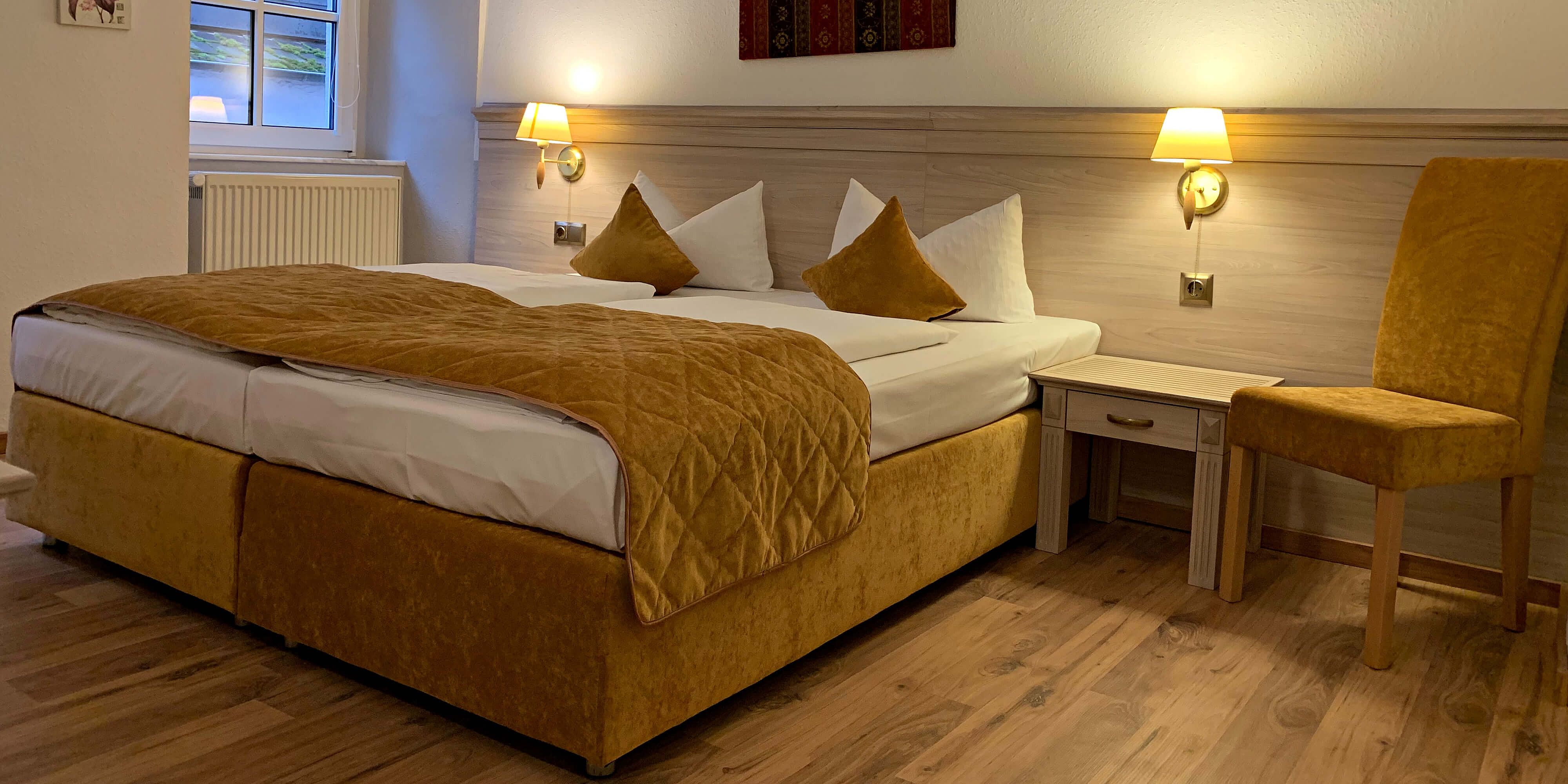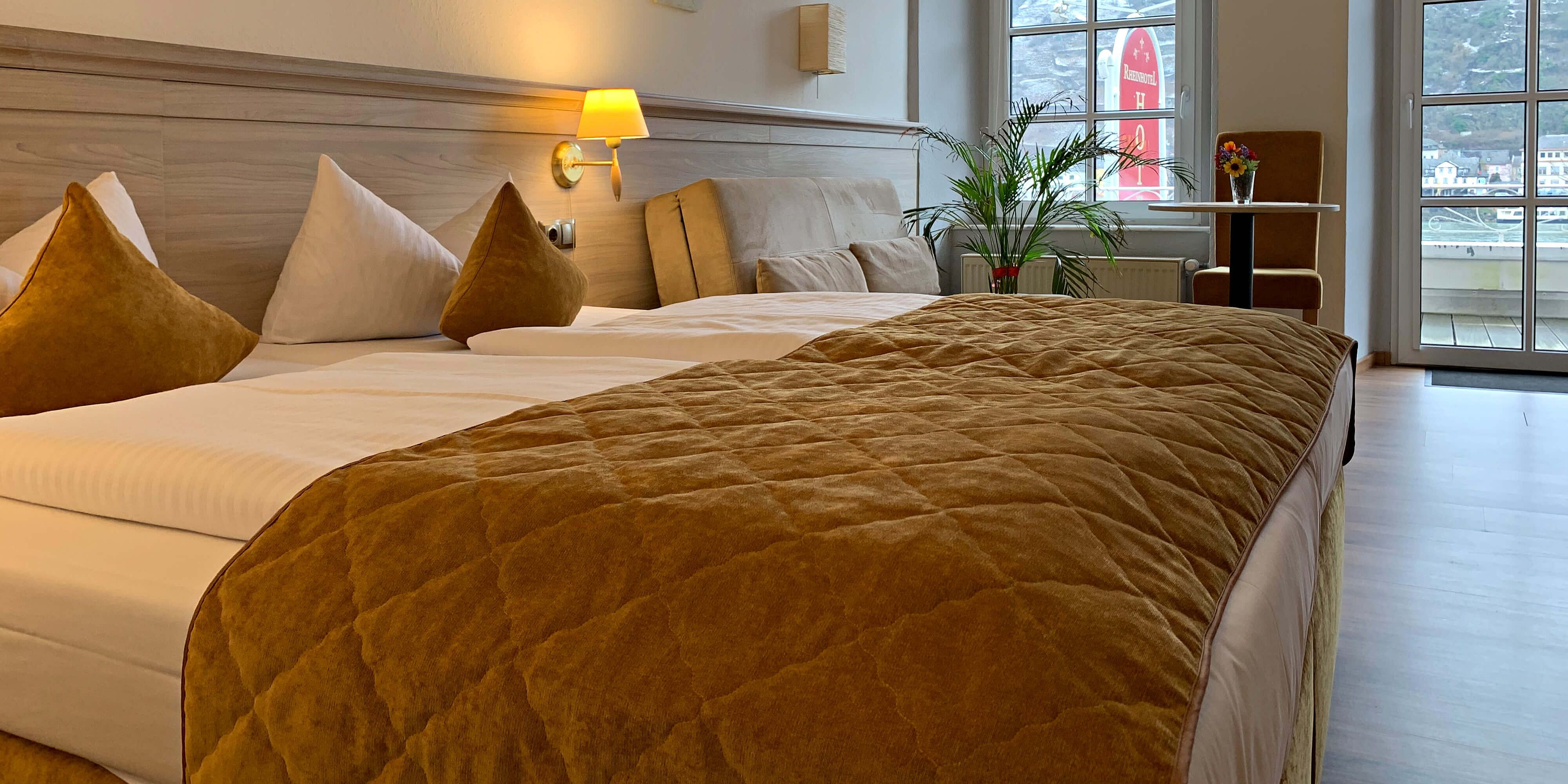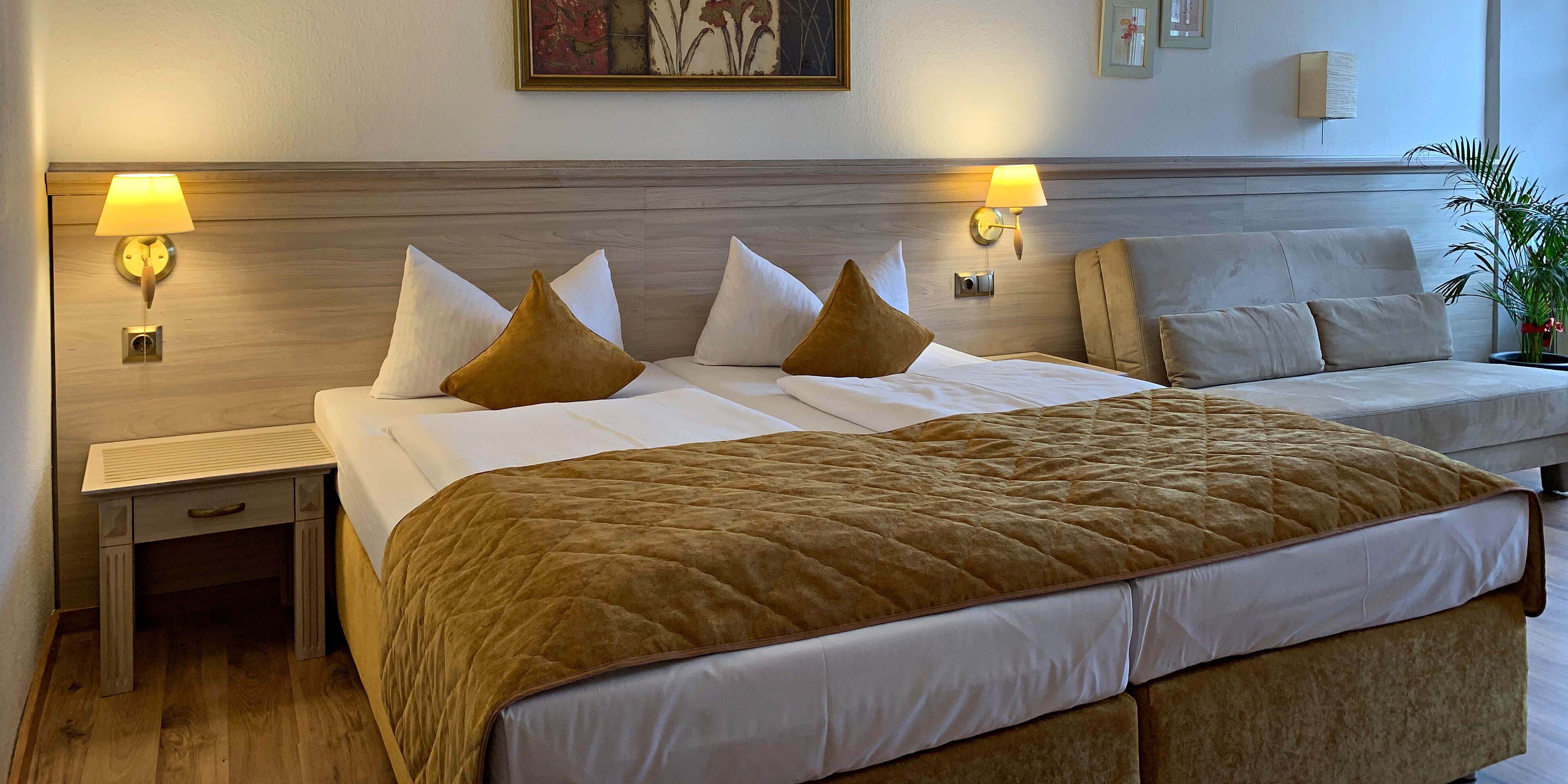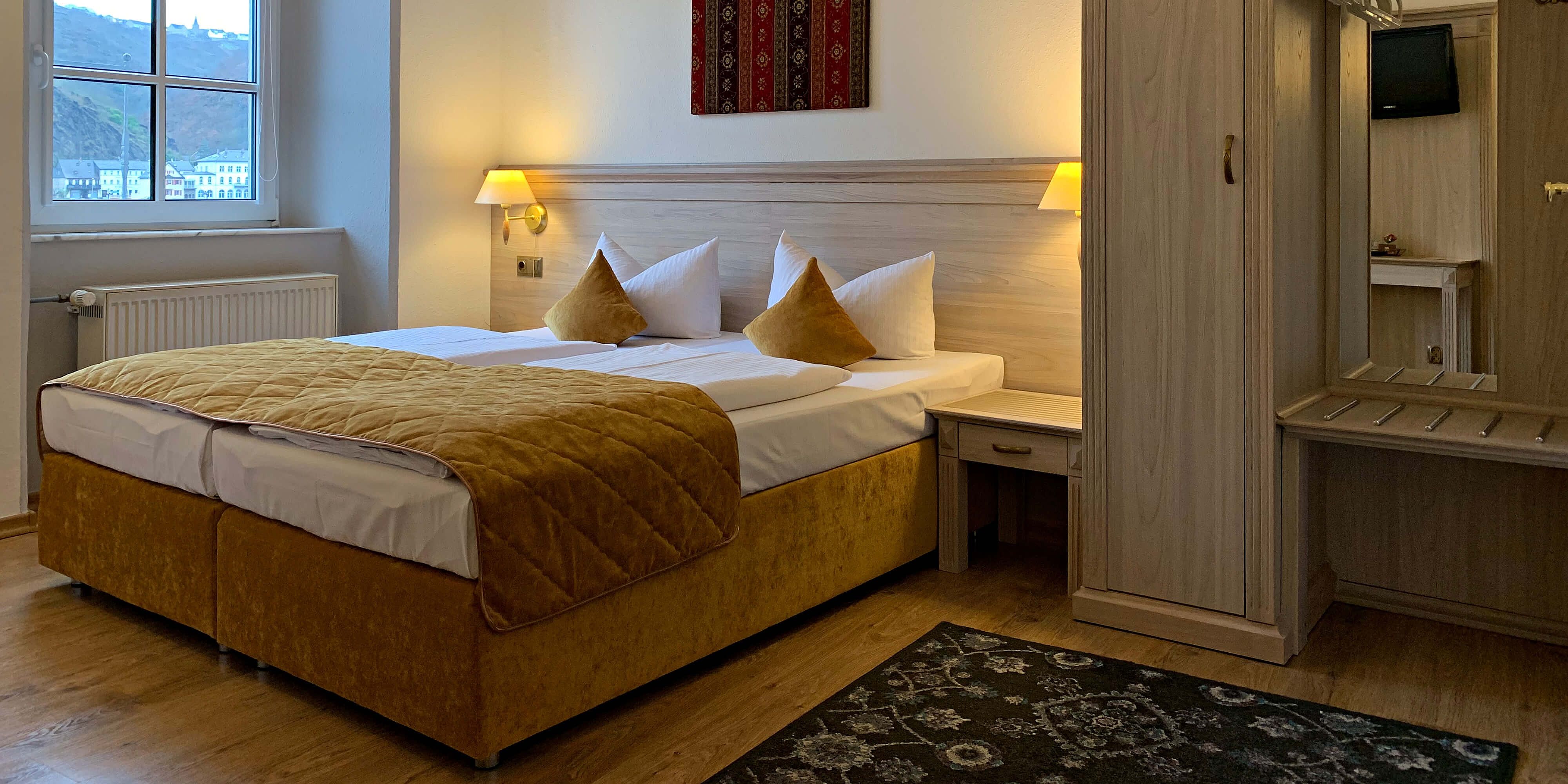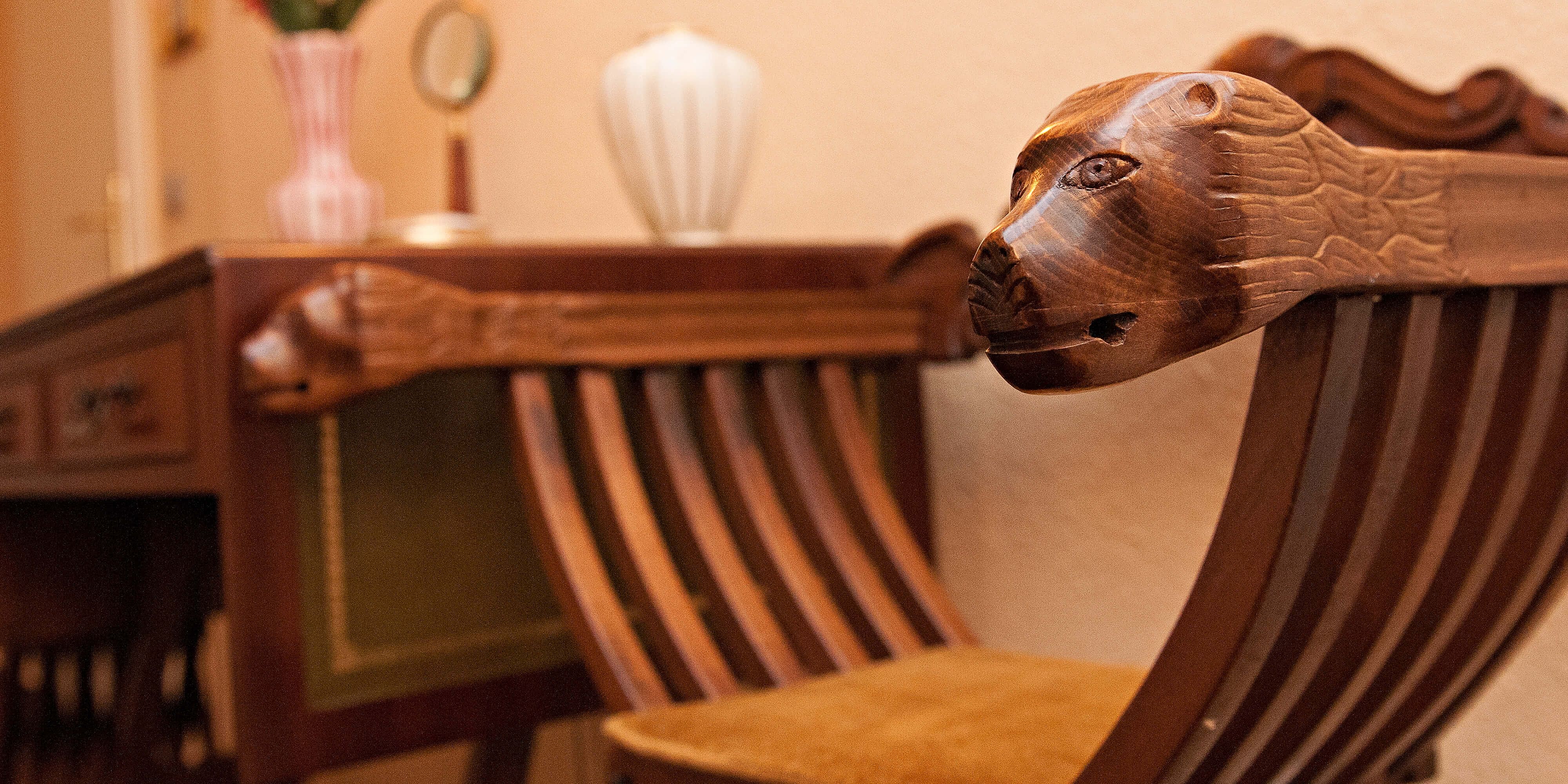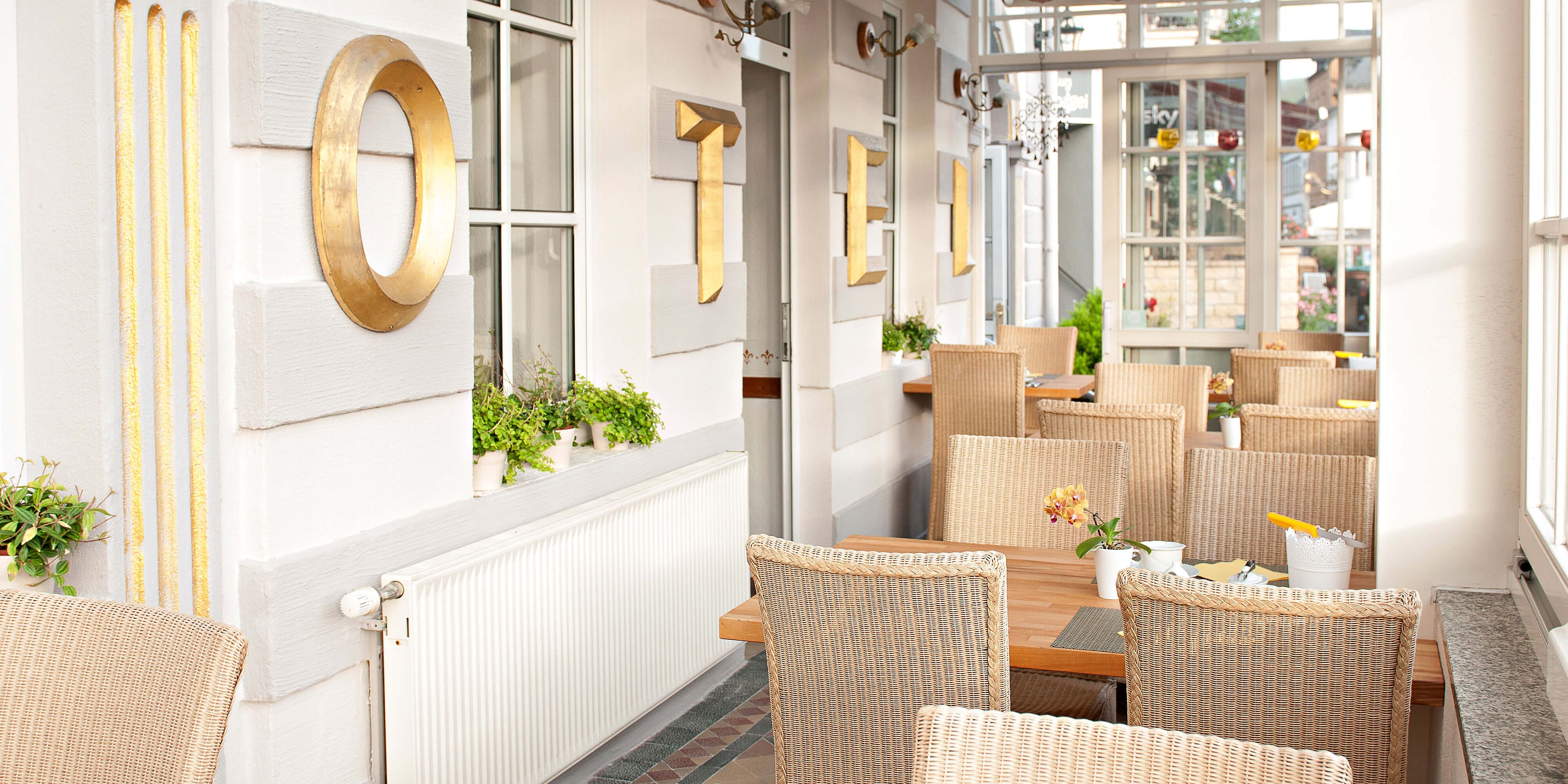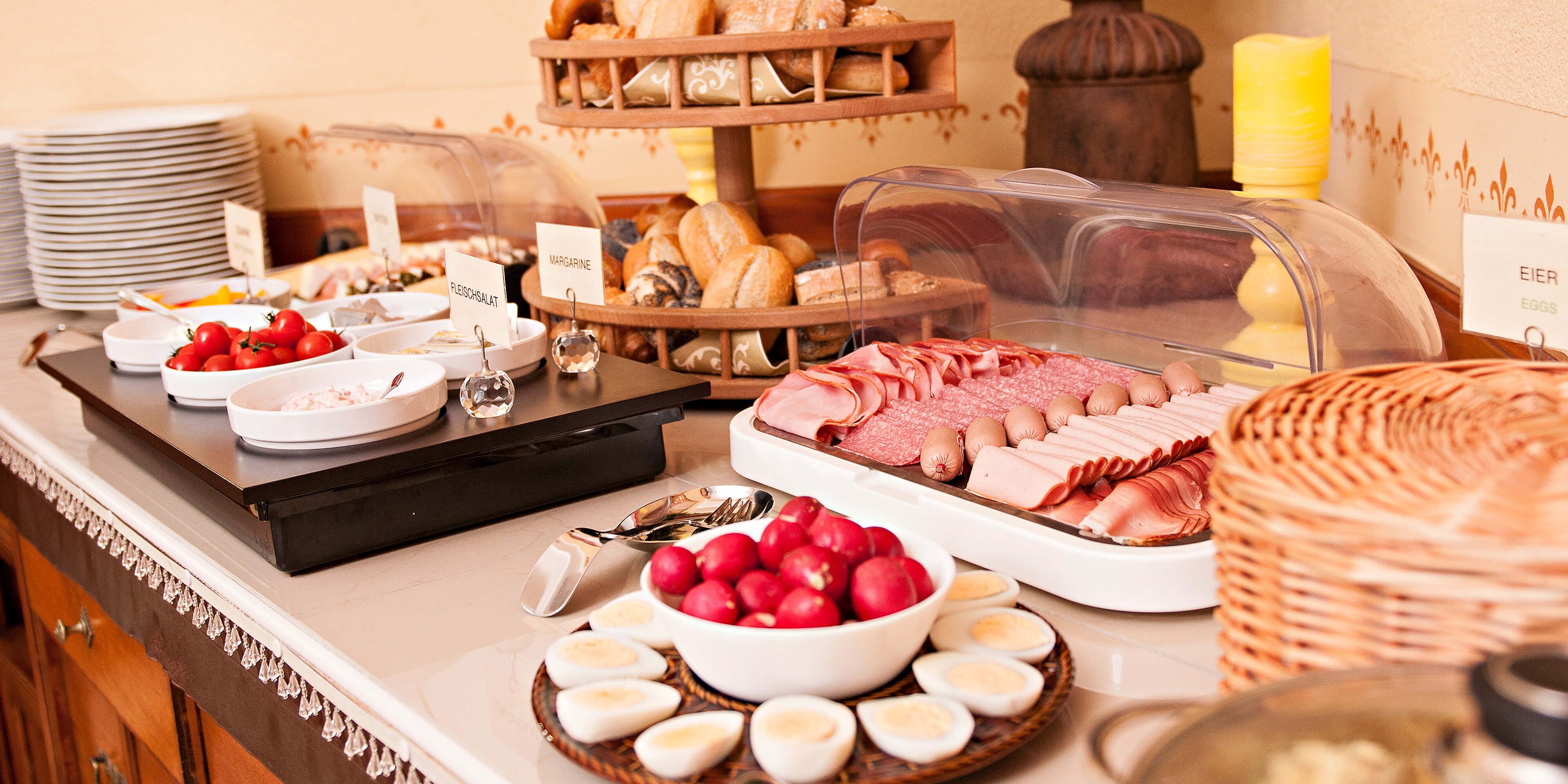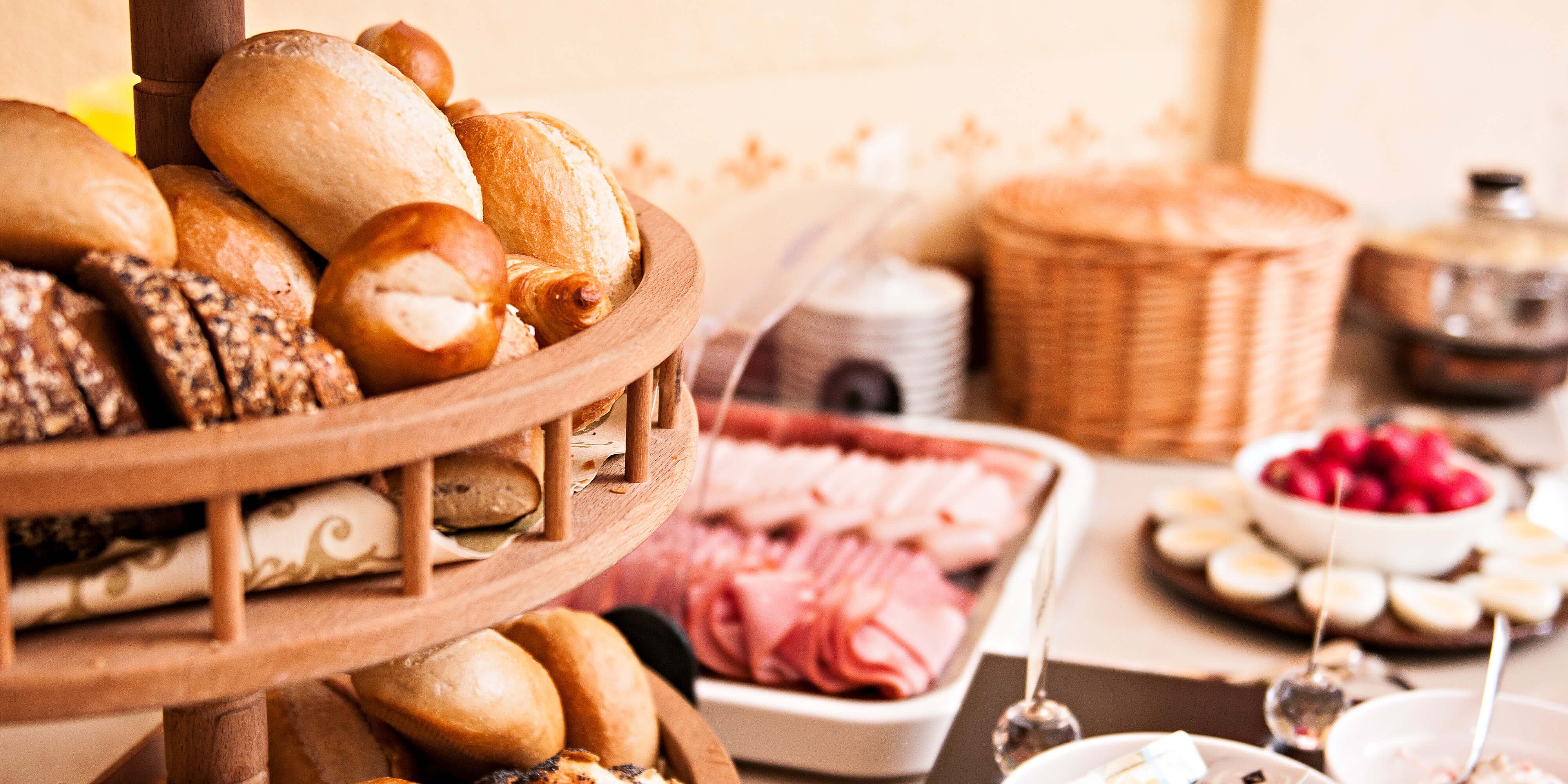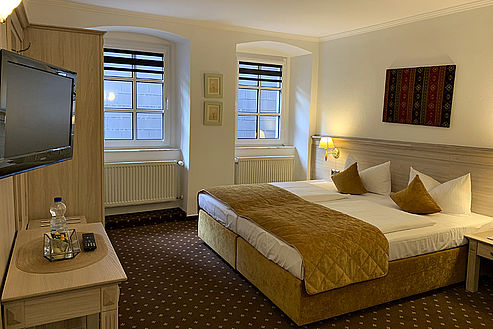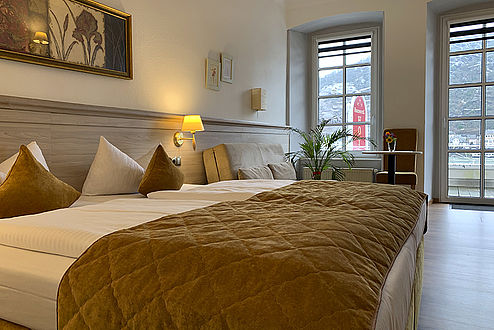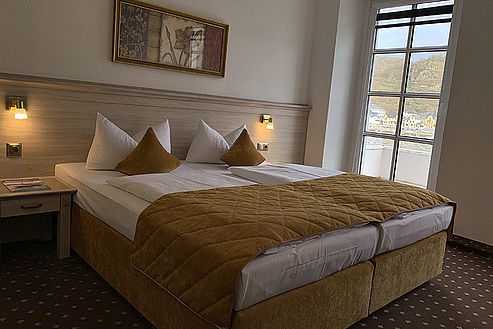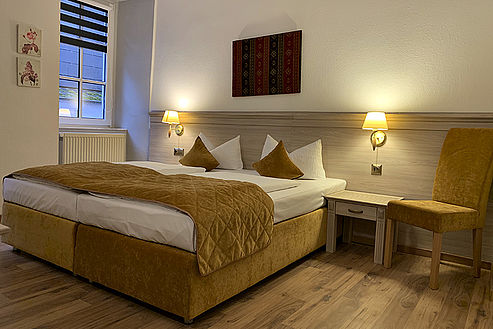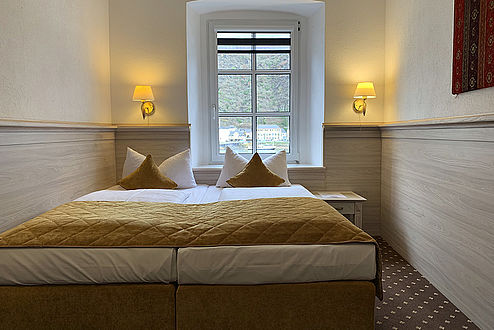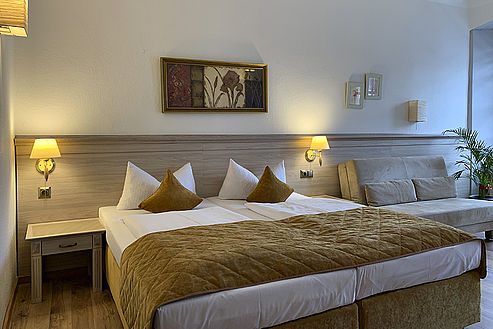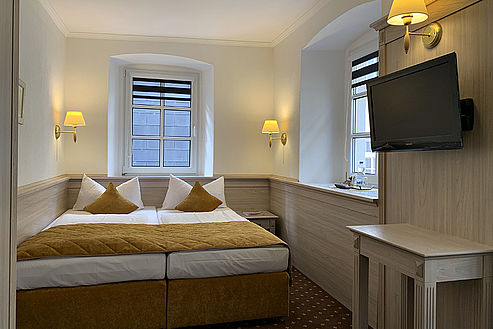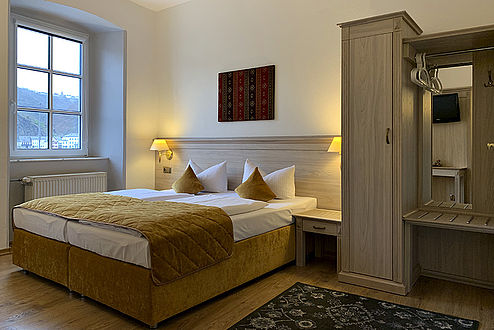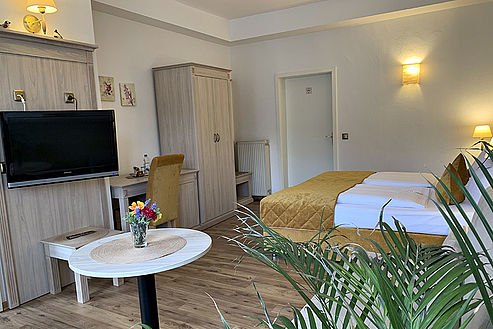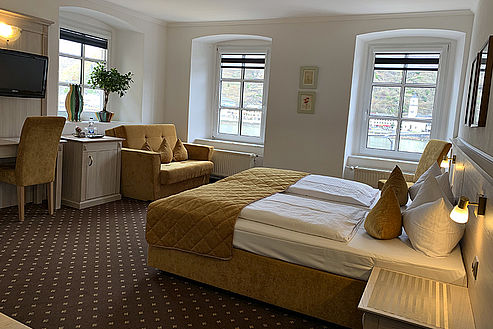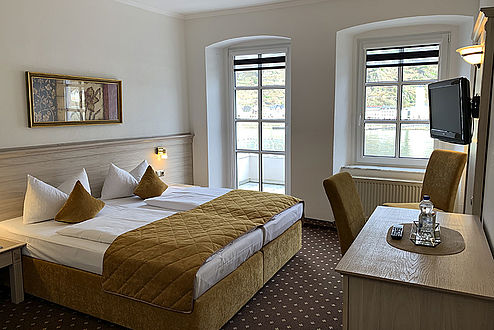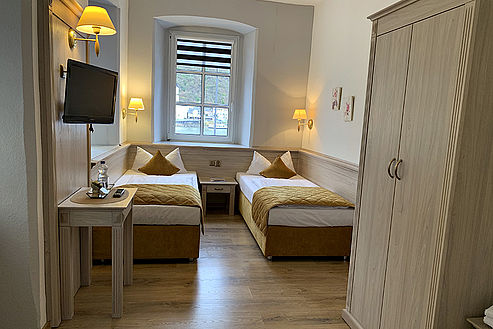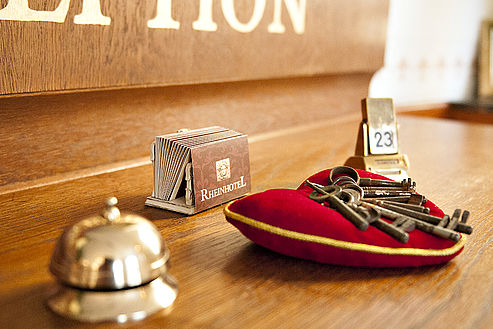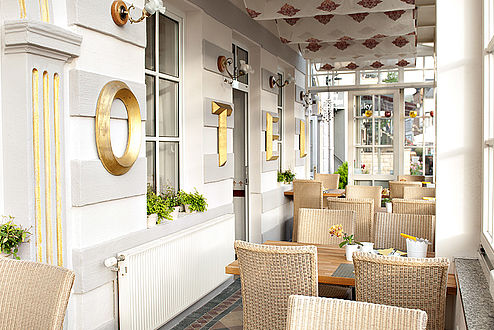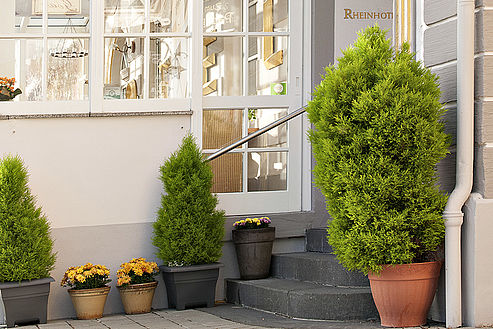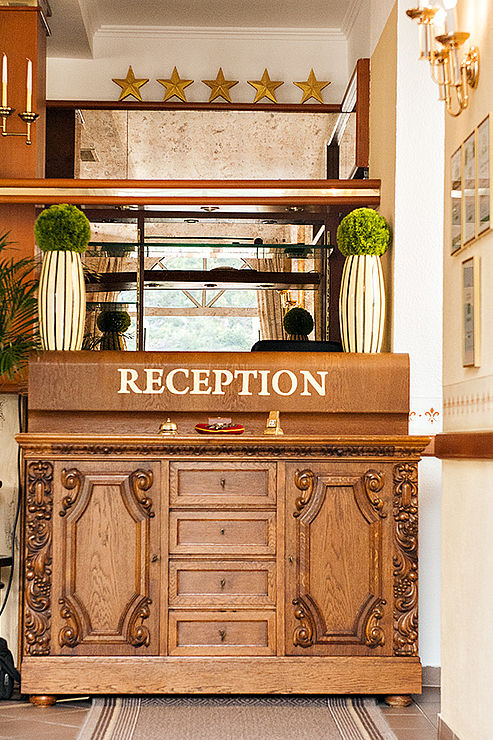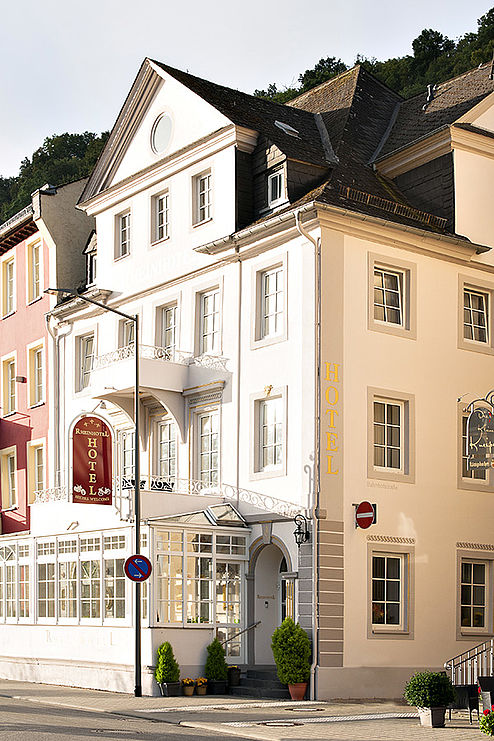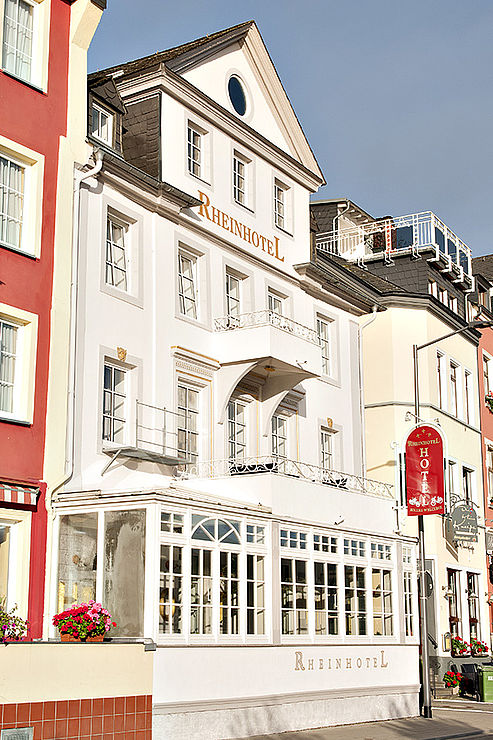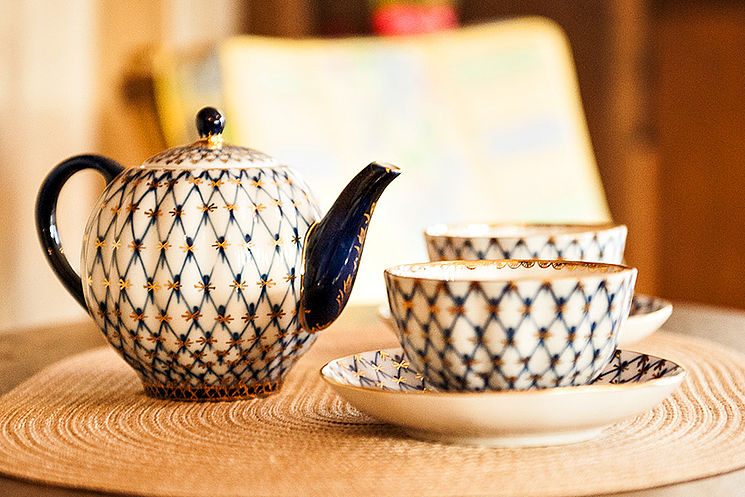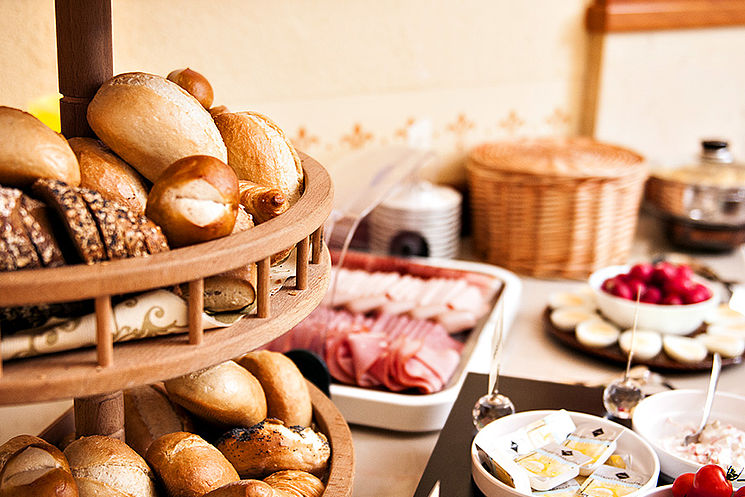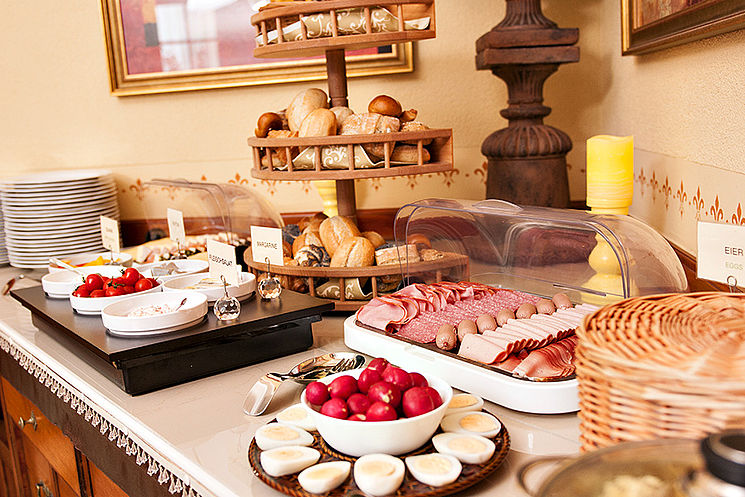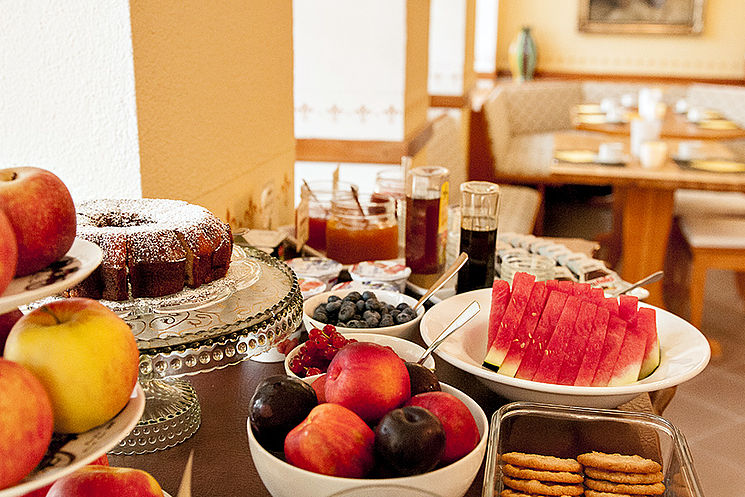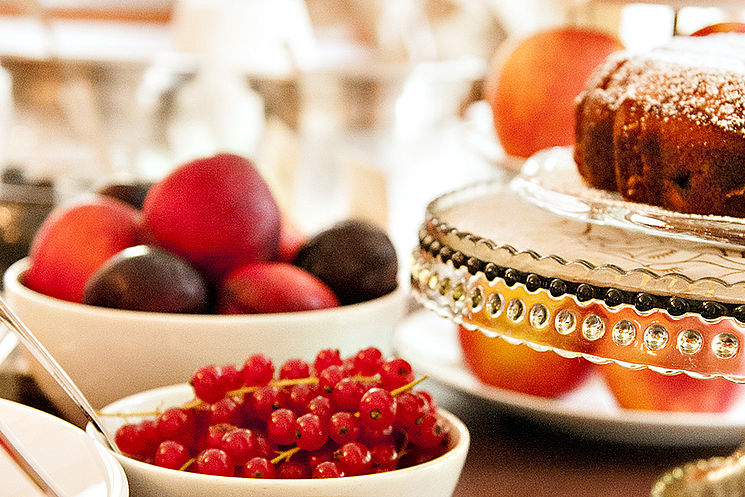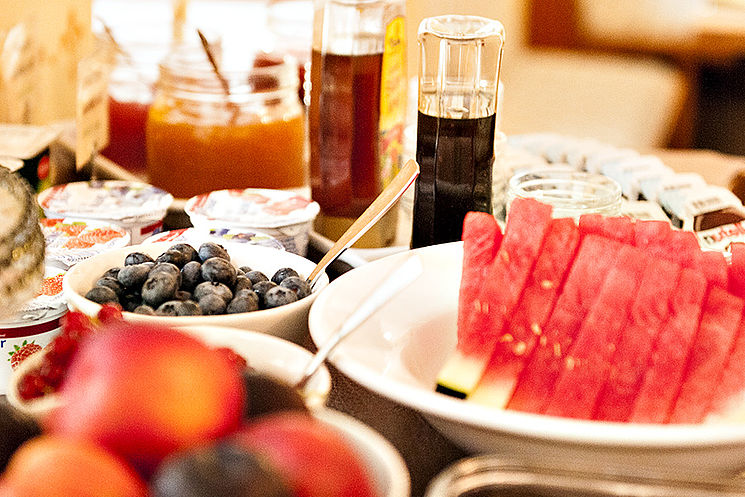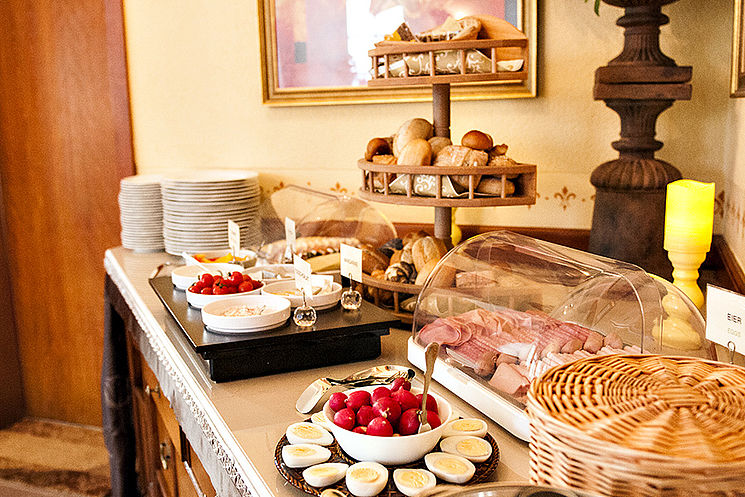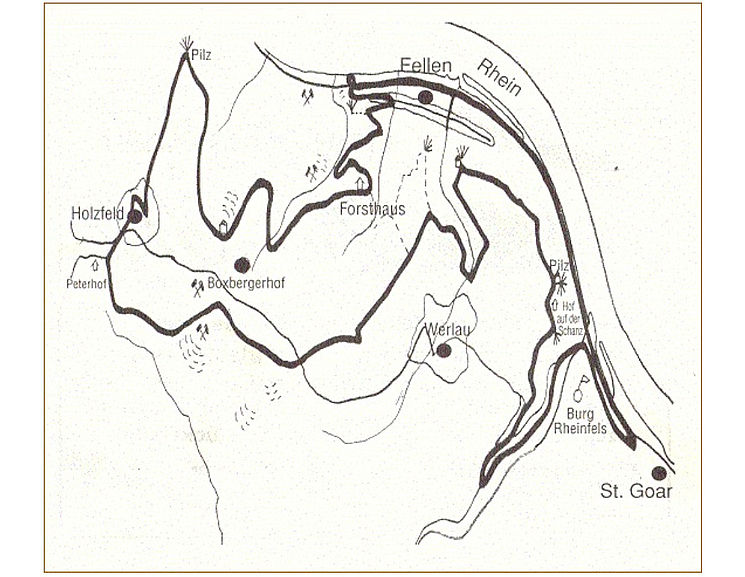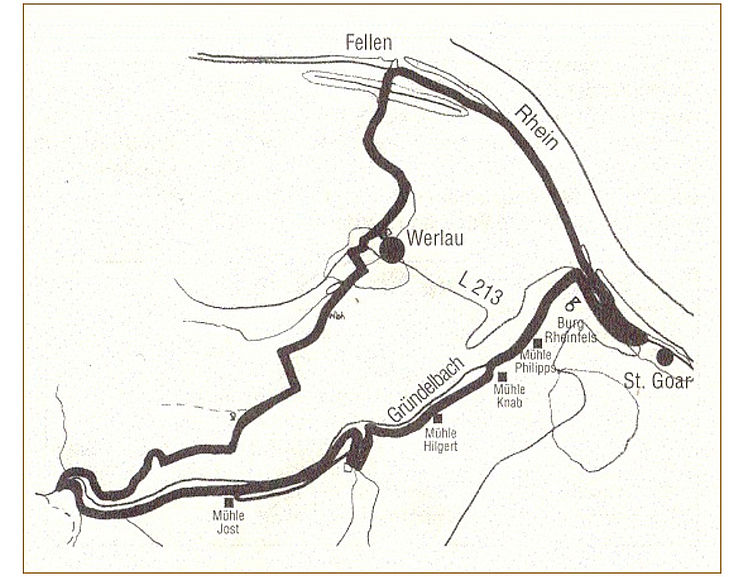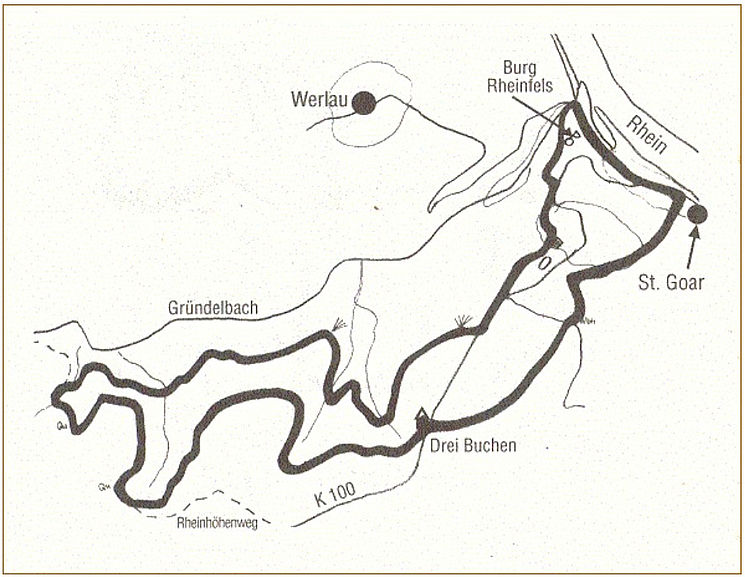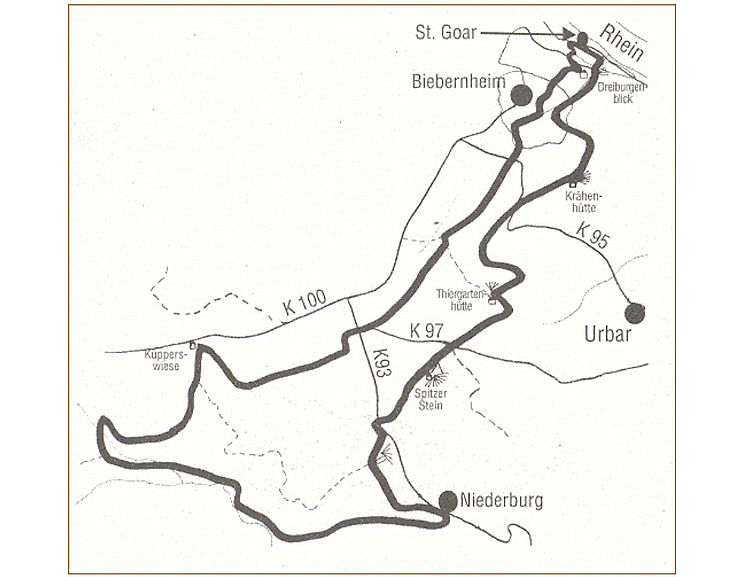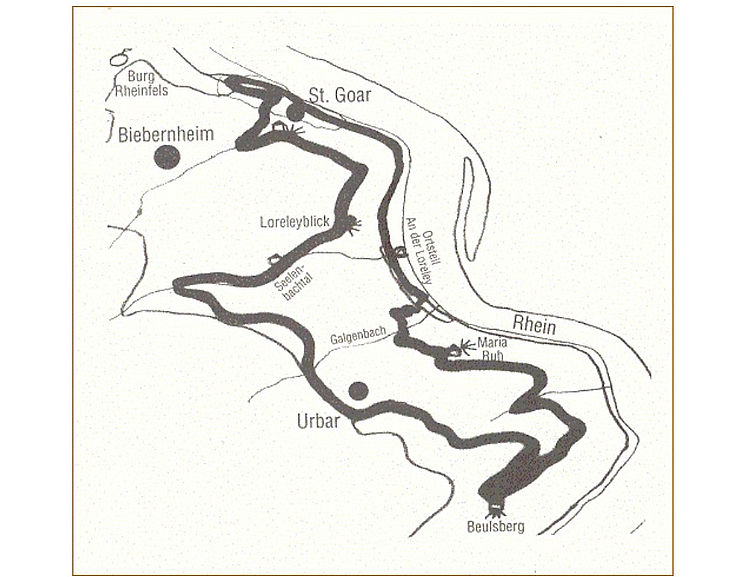The lovingly furnished hotel is located in a beautiful location right on the Rhine promenade. Our rooms offer you either (small double room, large double room, with Rhine view, without Rhine view and partly with balcony) an incomparable view over the landscape, the river and St. Goar.
The rooms are all furnished in a contemporary style - Our house was last renovated in 2017/2018 - and present itself in a clean condition. All rooms are equipped with TV, shower, toilet, seating etc. Furthermore, we provide you with free Internet Wi-Fi access.
We are pleased to offer you single and double rooms as well as triple or quadruple rooms. All our rooms are rented as non-smoking rooms only.
On request we also have a "room" for your bicycles. If you require a garage for your motorcycle, this is possible on request and subject to availability.
Welcome to the "Rheinhotel" St. Goar ...
... We welcome you to our homepage and hope to welcome you soon as a guest in our house. The "Rheinhotel" in St. Goar is a traditional hotel whose roots date back to 1789. We are committed to this tradition and would like to offer you a relaxing and eventful stay.
Enjoy the view of the Rhine and the surrounding castles directly from your room window or from your balcony. Due to its central location in the UNESCO World Heritage Upper Middle Rhine Valley, you can quickly reach all the attractions that make the Rhine Valley so lovable and ready for you. Since our house is located directly on the Rhine promenade, you can walk from here directly on the Rhine.
Rooms
Information
Parking: </ strong> In front of the hotel there are several paid public parking facilities. The loading and unloading of your vehicle in front of the hotel is allowed for a short time.
You also have the possibility to park all day. Here the daily rate is 4.00 € / day. The public car park is located 60 meters to the left of the hotel.
Check-in </ strong> from 14:00 to 19:00
Check-Out < />> until 11:00
For later check-in from 18:00 please contact me by phone at 0 67 41/98 12 40.
Breakfast buffet
Attractions
Enjoy the beautiful surroundings of St. Goar
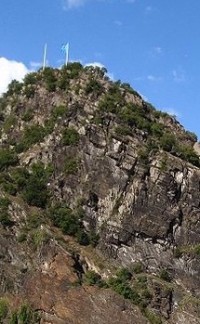
The Loreley (also Lorelei, Loreleï, Lore Lay, Lore-Ley, Lurley, Lurelei, Lurlei) is a slate rock in the UNESCO World Heritage Upper Middle Rhine Valley near Sankt Goarshausen, Rhineland-Palatinate, the located on the eastern, right, bank of the Rhine (at the Rhine 555 km) 132 meters (193.14 m above sea level) towering high on the inside of a bend. The view from the top of the Rhine curves and on Sankt Goarshausen with the castle Katz is a Attraction for tourists. A few hundred meters from the viewpoint, there is the Loreley open-air stage, built in 1939, where major events (such as rock concerts) take place on a regular basis.
Loreley has since Clemens Brentanos in his novel Godwi (1801) in ballad-style told fairy tales Lore Lay also the name of a sorceress or mermaid on this rock.
Brentano's invention had such a strong reception on the spot that even before the middle of the 19th century, his narrative as an old legend (as "fairy tales from ancient times Times ", see Heinrich Heine) was misunderstood. However, the content of this sham legend narrated in Brentano, Heine and others is clearly linked to mythologues already familiar from Greek mythology, such as the nymph Echo, who is turned into a rock, that of the magic eye, whereas the one who is looked at is defenseless, or the song of the sirens ruinous for boatmen. Brentano's Lore Lay attracts every man with her beauty and brings him to death. Heinrich Heine substantiates this fact by the boaters, who crash in the Rhine and are distracted by the singing of the Loreley.
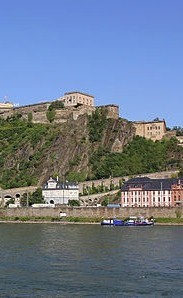
The Fortress Ehrenbreitstein is a since the 16th century existing, originally Kurtrierische, later Prussian fortification opposite the Mosel mouth in Koblenz.
Your Baroque predecessor building, which dates back to a castle built around the year 1000, was temporarily residence of the elector of Trier and was blown up in 1801 by French revolutionary troops. In its present form, the citadel (actually called Ehrenbreitstein festivals, its planned name was Feste Friedrich Wilhelm) was rebuilt between 1817 and 1828 under the direction of the Prussian engineer officer Carl Schnitzler. It was part of the Prussian fortress Koblenz built at the beginning of the 19th century and belonged to the Oberehrenbreitstein system.
Used by the Prussian army until 1918, the Ehrenbreitstein fortress served in the system of Koblenz fortifications to secure the Middle Rhine Valley and the entire transport infrastructure, d. H. Railways and river crossings near Koblenz.
Today it is owned by the state of Rhineland-Palatinate and houses the Koblenz State Museum, the Koblenz Youth Hostel, the Memorial of the German Army and various administrative offices. At the Federal Horticultural Show 2011 in Koblenz, the forecourt and parts of the fortress area itself were included in the event space. A spacious landscaped park with a viewing platform was built on the ground floor.
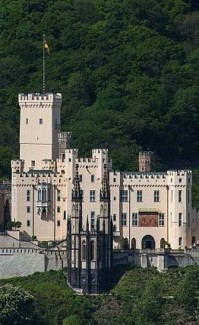
The Schloss Stolzenfels is a castle in the Middle Rhine Valley in Koblenz. It towers on the left side of the Rhine above the district Stolzenfels, for which it was named, opposite the Lahn estuary. The complex, which was only extended by the Prussian Crown Prince to the castle at the beginning of the 19th century, is based on a 13th-century Kurtrier customs castle, which was destroyed in 1689.
The neo-Gothic castle is the most outstanding work of Rhine Romanticism. The entire complex also includes a hermitage in the Gründgesbachtal, the former staff apartment, and a landscaped park.
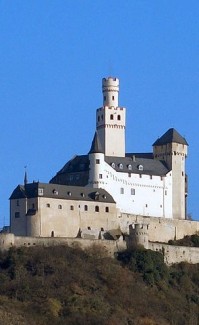
The Marksburg is a 12th-century hilltop castle above the Rhineland-Palatinate town of Braubach am Rhein, from which it took its original name Castle Brubach. It stands on a slate cone in 160 meters height and is the only never destroyed medieval hilltop castle on the Middle Rhine. The plastered quarry stone was built to protect and administer Braubachs and initially served as a customs castle.
The castle is a protected cultural monument according to the Historic Preservation Act (DSchG) and registered in the list of monuments of Rhineland-Palatinate. Furthermore, it is a protected cultural property according to the Hague Convention and marked with the blue and white protection mark. In addition, since 2002 it is part of the UNESCO World Heritage Upper Middle Rhine Valley

The Burg Lahneck is a towering 164 m above sea level in the first half of the 13th century. NHN high rock spur built above the left bank of the Lahn on the Lahn estuary Spornburg. It is located in the district Oberlahnstein the city Lahnstein on the Rhine and Lahn opposite the castle Stolzenfels.
Its layout has a symmetry in the form of an oblong rectangle, typical of the castles of the late Staufer period.
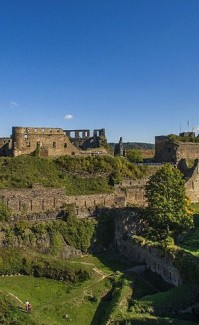
The Rheinfels Castle is the ruin of a spur castle situated on a ridge between the left bank of the Rhine and the Gründelbachtal above St. Goar. After its extension to the fortress, it was the largest weir in the Middle Rhine Valley between Koblenz and Bingen and was surpassed only by the fortress Ehrenbreitstein, which is located in the Middle Rhine Valley above the right bank of the same name Koblenz district.
Since 2002 Rheinfels Castle is part of the UNESCO World Heritage Upper Middle Rhine Valley.
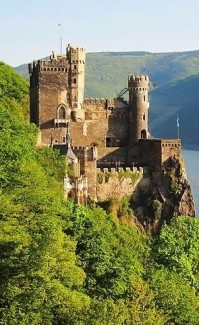
The Rheinstein Castle , also called Burg Voitsberg or Vaitzburg, is a spur castle in the upper Middle Rhine Valley in the municipality Trechtingshausen in the district of Mainz-Bingen in Rhineland-Palatinate, Germany. It received its current name after completion of its reconstruction in 1829.
Since 2002, the castle Rheinstein is part of the UNESCO World Heritage Upper Middle Rhine Valley.
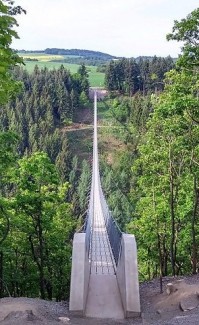
The Suspension bridge Geierlay (official name) or Geierlay is a pedestrian bridge between the local communities Mörsdorf (Rhein-Hunsrück-Kreis) and Sosberg (district Cochem-Zell). It lies in the Hunsrück and crosses the Mörsdorfer Bachtal.
Until the Titan-RT was erected on the Rappbode dam in 2017, it was considered to be the longest suspension bridge in Germany with a length of 360 m.
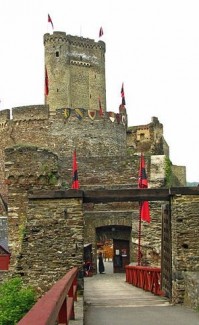
The Ehrenburg is the ruin of a spur castle at 230 m above sea level. NN near Brodenbach with a quite varied history. It was built on a rock spur in the Ehrbachtal, a tributary of the Moselle.
Once the fortified center of a small imperial reign, with property between the Lower Moselle and the Middle Rhine, today it is a cultural monument with a variety of events
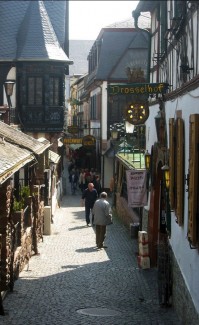
Rüdesheim am Rhein is a wine town in the Hessian Rheingau-Taunus-Kreis and is located opposite Bingen at the southern gate to the Middle Rhine Valley. Rüdesheim is part of the UNESCO World Heritage Upper Middle Rhine Valley.
It lies at the foot of the Niederwald. The city belongs to the Rhine-Main area and is a well-known tourist attraction.
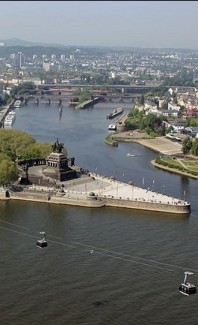
Koblenz (Mundartlich: Kowelenz) is a city in the north of Rhineland-Palatinate. With almost 113,000 inhabitants, it is the fourth largest city in this country after Mainz, Ludwigshafen am Rhein and Trier and forms one of its five regional centers. Koblenz is the seat of the Koblenz campus of the University of Koblenz-Landau, the RheinMoselCampus of the University of Koblenz, the administration of the Mayen-Koblenz district, the Structural and Approval Directorate North (until 1999 Koblenz district government), the Federal Archives, the Constitutional Court of Rhineland-Palatinate and the Federal Office for equipment, information technology and use of the Bundeswehr.
Koblenz celebrated its 2000th anniversary in 1992, making it one of Germany's oldest cities.
The original Latin name Confluentes (German the confluent) was derived from the location of the city at the mouth of the Moselle in the Rhine at the so-called German Eck.Bis 1926 was the spelling of the city of Coblenz. Koblenz became a major city in 1962, reaching a population of 100,000.
Parts of Koblenz are UNESCO World Heritage sites. Since 2002, the city with its cultural monuments has been the northern gateway to the Upper Middle Rhine cultural landscape, the Niederberg Castle In turn, since 2005 has been on the UNESCO list as part of the Upper German-Rhaetian Limes. In 2011, the first federal horticultural show in Rhineland-Palatinate took place in Koblenz.
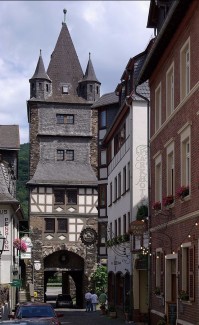
Bacharach (also known as Bacharach am Rhein) is a city in the UNESCO World Heritage Upper Middle Rhine Valley in the district of Mainz-Bingen in Rhineland-Palatinate. The original name Baccaracus indicates a Celtic origin.
Above the village rises the castle Stahleck (today a youth hostel).
Bacharach is a nationally recognized tourist resort and designated as a basic center according to the state planning.
Boat tours
The KD pier is right in front of the hotel.
The Köln-Düsseldorfer Deutsche Rheinschiffahrt AG (KD) is a society founded in 1853 for amusement rides on the Rhine, Main and Moselle. With a fleet of 14 ships, KD is also the market leader in this industry. Traditional attractions include the attractions of the Middle Rhine or special events like the Rhine in Flames. KD is the oldest publicly traded corporation in the world.
